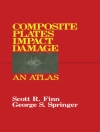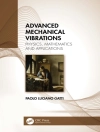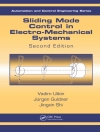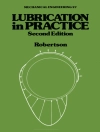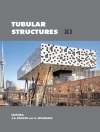Since Lord Rayleigh introduced the idea of viscous damping in his classic work ‚The Theory of Sound‘ in 1877, it has become standard practice to use this approach in dynamics, covering a wide range of applications from aerospace to civil engineering. However, in the majority of practical cases this approach is adopted more for mathematical convenience than for modeling the physics of vibration damping.
Over the past decade, extensive research has been undertaken on more general ’non-viscous‘ damping models and vibration of non-viscously damped systems. This book, along with a related book Structural Dynamic Analysis with Generalized Damping Models: Identification, is the first comprehensive study to cover vibration problems with general non-viscous damping. The author draws on his considerable research experience to produce a text covering: dynamics of viscously damped systems; non-viscously damped single- and multi-degree of freedom systems; linear systems with non-local and non-viscous damping; reduced computational methods for damped systems; and finally a method for dealing with general asymmetric systems. The book is written from a vibration theory standpoint, with numerous worked examples which are relevant across a wide range of mechanical, aerospace and structural engineering applications.
Contents
1. Introduction to Damping Models and Analysis Methods.
2. Dynamics of Undamped and Viscously Damped Systems.
3. Non-Viscously Damped Single-Degree-of-Freedom Systems.
4. Non-viscously Damped Multiple-Degree-of-Freedom Systems.
5. Linear Systems with General Non-Viscous Damping.
6. Reduced Computational Methods for Damped Systems
Inhaltsverzeichnis
Acknowledgements
1 Introduction to Damping Models
1.1 Historical review of vibration damping
1.2 Damping in structural elements
1.2.1 Material damping effects
1.2.2 Non-material damping effects
1.3 Viscous damping models
1.3.1 Proportional viscous damping
1.3.2 Non-proportional viscous damping
1.4 Viscoelastic damping
1.5 Fractional damping
1.6 General nonviscous damping models
1.7 Damping in composite materials and structures
1.8 Nonlinear damping models
1.9 Damping enhancement in vibrating systems
1.9.1 Tuned mass dampers
1.9.2 Friction dampers
1.9.3 Impact dampers
1.10 Experimental identification of damping
1.11 Scope of the book
2 Review of Undamped and Viscously Damped Systems
2.1 Single-degree-of-freedom systems
2.2 Multiple-degree-of-freedom undamped systems
2.2.1 Modal analysis
2.2.2 Dynamic response
2.3 Proportionally damped systems
2.3.1 Condition for proportional damping
2.3.2 Generalized proportional damping
2.3.3 Dynamic response
2.4 Non-proportionally damped systems
2.4.1 Free vibration and complex modes
2.4.2 Dynamic response
2.5 Continuous systems
2.5.1 Axial vibration of rods
2.5.2 Flexural vibration of beams
2.5.3 Bending vibration of thin plates
3 Nonviscously Damped Single-Degree-of-Freedom Systems
3.1 Introduction
3.2 The equation of motion
3.3 Conditions for oscillatory motion
3.4 Critical damping factors
3.5 Characteristics of the eigenvalues
3.5.1 Characteristics of the natural frequency
3.5.2 Characteristics of the decay rate corresponding to the oscillating mode
3.5.3 Characteristics of the decay rate corresponding to the non-oscillating mode
3.6 The frequency response function
3.7 Characteristics of the response amplitude
3.7.1 The frequency for the maximum response amplitude
3.7.2 The amplitude of the maximum dynamic response
3.8 Simplified analysis of the frequency response function
4 Nonviscously Damped Multiple-Degree-of-Freedom Systems
4.1 Introduction
4.1.1 Choice of the kernel function
4.1.2 The exponential model for MDOF nonviscously damped systems
4.2 The state-space formulation
4.2.1 Case A: All coefficient matrices are of full rank
4.2.2 Case B: coefficient matrices are rank deficient
4.3 The eigenvalue problem
4.3.1 Case A: All coefficient matrices are of full rank
4.3.2 Case B: coefficient matrices are rank deficient
4.4 Forced vibration response
4.4.1 Frequency domain analysis
4.4.2 Time domain analysis
4.5 Numerical examples
4.6 Concluding remarks
5 Nonviscously Damped Continuous Systems
5.1 Equation of motion
5.2 Models of damping
5.3 Axial vibration of rods with nonviscous damping
5.3.1 Equation of motion
5.3.2 Free vibration
5.3.3 Forced vibration
5.4 Flexural vibration of beams with nonviscous damping
5.4.1 Equation of motion
5.4.2 Free vibration
5.4.3 Forced vibration
5.5 Bending vibration of thin plates with nonviscous damping
5.5.1 Equation of motion
5.5.2 Free vibration
5.5.3 Forced vibration
6 Continuous Systems with Nonlocal Damping
6.1 Flexural vibration of beams with nonlocal damping
6.1.1 Exact solution using transfer matrix approach
6.1.2 Galerkin Approach
6.1.3 Finite Element Approach
6.2 Bending vibration of thin plates with nonlocal damping
6.2.1 Exact solution using transfer matrix approach
6.2.2 Galerkin Approach
6.2.3 Finite Element Approach
A Mathematical Preliminaries
A.1 Vector Spaces
A.2 Matrix Algebra
A.3 Laplace Transforms
References
Über den Autor
Sondipon Adhikari is Chair Professor of Aerospace Engineering at Swansea University, Wales. His wide-ranging and multi-disciplinary research interests include uncertainty quantification in computational mechanics, bio- and nanomechanics, dynamics of complex systems, inverse problems for linear and nonlinear dynamics, and renewable energy. He is a technical reviewer of 97 international journals, 18 conferences and 13 funding bodies. He has written over 180 refereed journal papers, 120 refereed conference papers and has authored or co-authored 15 book chapters.


